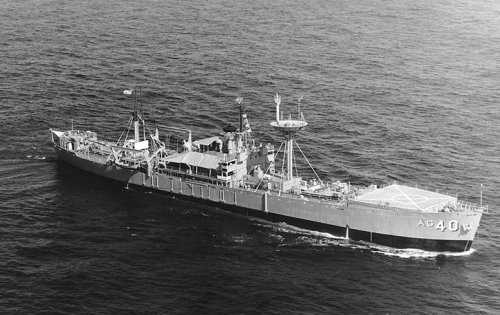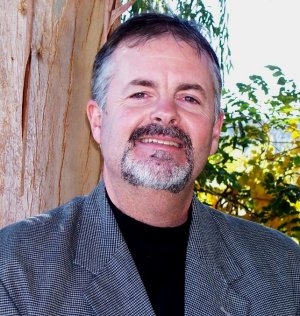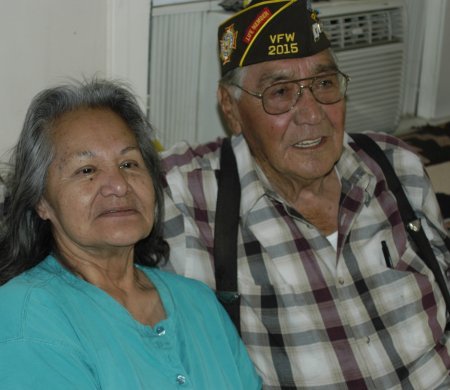THIS STORY HAS BEEN UPDATED.
LAKEPORT – It likely will be next month before a Carmichael man will know if he's to stand trial in connection with a 2006 crash on the lake.
Just as the testimony of a key witness was getting under way in the preliminary hearing of 39-year-old Bismarck Dinius on Thursday afternoon, the judge called a halt to proceedings due to other scheduled business, which will result in a delay until June.
Judge Richard Martin and attorneys in the case had discussed earlier in the day the possibility that the hearing might need to be continued if it ran longer than scheduled.
Russell Perdock, a chief deputy with the Lake County Sheriff's Office, was called to the stand late in the day and gave testimony that appeared to contradict another sheriff's official before the hearing recessed.
Perdock's speedboat hit a sailboat Dinius was piloting on the night of April 29, 2006, which fatally injured 51-year-old Lynn Thornton of Willows, who died days later.
Dinius has been in court since Tuesday for the preliminary hearing to determine if he will stand trial for vehicle manslaughter involving a vessel and boating under the influence of alcohol relating to the crash.
Day three of testimony began with Lt. Charles Slabaugh of the Sacramento County Sheriff's Office returning to the stand, where he had spent several hours on Wednesday.
During testimony Slabaugh indicated that Perdock had initially been considered a suspect in the case but soon after beginning his preliminary investigation Slabaugh determined that, despite not having interviewed Perdock, it was Dinius who was the responsible party, based on the information available to him.
Slabaugh testified that on June 13, 2006, he conducted his first and only face-to-face interview with Perdock, despite the fact that he had submitted a report of his conclusions on May 10 of the same year.
Under direct examination by Deputy District Attorney John Langan, Slabaugh indicated that after Wednesday's session he returned to his hotel and telephoned Lake County Sheriff's Deputy Lloyd Wells. Slabaugh said he asked Wells to examine the sailboat involved in the crash – the Beats Workin' II, owned by Mark Weber of Willows – which is still in the sheriff's possession.
Wells was asked to report on the number, location and mechanical condition of any and all interior cabin lights of Weber’s sailboat, Slabaugh explained.
Slabaugh testified that Wells reported a total of six cabin lights and described their locations. Slabaugh further indicated that Wells reported that all six light fixtures had individual on/off switches. Slabaugh said Wells did not test the current status of each light fixture's functionality.
This information was used Thursday in an effort to respond to questions regarding the position and functionality of switches located on the sailboat's control panel at the time of the collision, a topic discussed during Wednesday's testimony.
Defense attorney Victor Haltom asked Slabaugh why he had waited two years to examine the cabin light system, and why he hadn't done so during his initial investigation.
Slabaugh replied that he had initially determined that the status of the cabin lights had no bearing on the cause or possible prevention of the accident.
Following Slabaugh to the stand Thursday morning was sheriff's Sgt. James Beland, who testified that he was one of the first group of sheriff's deputies to arrive at the shoreline scene.
He and Sgt. Mike Morshed were on scene and controlling the gathering crowd, Beland explained. Both were aware that Sgt. Dennis Ostini, who supervises the sheriff's Boat Patrol division, was en route and would take charge of the situation upon his arrival.
Beland indicated that no unusual activity took place during his time on scene. He further testified that he had not spoken with Perdock beyond asking him, “Are you all right?”
At some point during the night of the crash Beland was directed to transport Perdock to Redbud Hospital for a blood draw to check for the presence of drugs or alcohol in his system.
Under questioning Beland indicated that no one from the the sheriff's office superior to himself had ordered him not to administer a field sobriety test to Perdock.
Despite Beland's suggestion to Ostini that Dinius may be intoxicated, he also was not administered a field sobriety test with a preliminary alcohol screening device.
Beland testified that he drove Perdock to Redbud Hospital. He was present during the blood draw and witnessed the phlebotomist place the vial in a certified Department of Justice envelope, which later was inserted into an evidence box and turned over to Beland.
During questioning by Haltom, Beland testified that he could not recall exactly where in his patrol car he placed the package containing the blood sample. He indicated that at no time was Perdock left alone in the vehicle unattended.
Beland testified that he and Perdock drove around for awhile and arrived at the sheriff's Lower Lake substation “about an hour” after leaving the hospital.
He was unable to recall or describe exactly where they drove nor why it took so long to travel such a short distance.
According to Beland there were no other persons in the patrol car and he had not generated a log indicating the time of arrival at Redbud nor a log of distance traveled before reaching the Lower Lake substation.
Beland testified that he had not discussed the incident with Perdock during the drive. He did indicate that he had driven Perdock somewhere for an extended period of time after depositing the blood sample at the Lower Lake substation but was unable to recall where or when he and Perdock parted company.
Following Beland's testimony the prosecution rested its case.
The witnesses Haltom called included Bill Chilcott, who examined the filaments on the boat's lights. He viewed both vessels three times, as well as the Department of Justice's reports, although he did not review the sheriff's reports, saying he did not want to be influenced.
He stated he microscopically examined three light structures from the sailboat given to him by the sheriff's office, with a District Attorney's Office representative present during the examination. The point was to determine if the lights were on at the time of failure. The question was, did the lights go out after the collision or had they been off previous to it?
By looking at the changes in the filament structure, he determined the bow was illuminated and the stern light was on. He did not testify about whether or not the mast lights were on.
Another defense witness, marine accident investigation consultant Wes Dodd, agreed with Chilcott's analysis of the lights. Dodd said he completely discounted photos of the boat's light breakers, which showed the switches on the “off” position, based on the condition of the light filaments.
Both Chilcott and Dodd pointed to the speed and velocity of Perdock's boat as being the cause of the crash. Dodd said he was amazed that Dinius was charged and Perdock was not, because he concluded that Perdock had violated numerous boating rules, including safe speed, not having a lookout and operating a vessel in a negligent manner.
Haltom called Perdock to the stand at the end of the day Thursday.
Statements Perdock made during his brief initial appearance on the stand contradicted Beland's testimony.
One of the contradictions involved statements Beland made about driving Perdock around for about an hour after leaving the hospital at 1:30 a.m. April 30, 2006.
Perdock acknowledged that Beland transported him to the hospital but did not mention being driven around for the hour or so Beland had testified to earlier in the day.
Haltom asked Perdock if he had discussed the case with Beland that night, and Perdock said he had not. Haltom then produced statements Perdock made in a previous disposition in which he had said he and Beland had discussed the incident.
Perdock's testimony had been under way for approximately six minutes before Judge Martin halted the hearing due to the courtroom being needed for other scheduled court business.
The case is due to return to court at 9 a.m. June 10.
E-mail Harold LaBonte at This email address is being protected from spambots. You need JavaScript enabled to view it..
{mos_sb_discuss:2}

 How to resolve AdBlock issue?
How to resolve AdBlock issue? 









